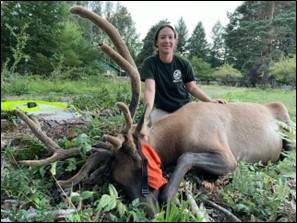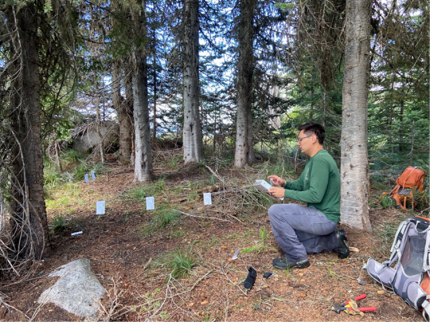
Wildlife Program report: Aug. 1-15, 2023
Providing Recreation Opportunities
Trail Inventory Projects: Browning and Andersen continue to manage trail inventory projects in Quincy Lakes, L. T. Murray, and the Methow wildlife areas. The Quincy Lakes project is in the final stages and a report is being written by the contractor. Re-routes around culturally sensitive areas have been mapped. Browning and Andersen are preparing a contract with Methow Valley Trails Collaborative to do a trails conditions assessment of the Pipestone area in the Methow Wildlife Area.
Conserving Natural Landscapes
Skagit Wildlife Area Planning: The Skagit Wildlife Area Advisory Committee meeting was held on Aug. 15. The focus of the meeting was to collect comments on the draft management plan. The draft plan was also sent to the tribes on July 24. The plan is expected to start the SEPA 30-day public review by early September. A SEPA public workshop will be held at Padilla Bay on Sep. 5.
State-Tribes Recreation Impact Management: Washington Department of Fish and Wildlife (Department) is working with federally recognized tribes and other state agencies to develop a framework for managing recreation impacts on state lands. A second meeting of the Steering Committee will be held on Aug. 17.
L. T. Murray Wildlife Area Planning: The State Environmental Protection Act (SEPA) review has concluded on the plan. The final draft was sent to regional and statewide program managers for internal review. The final plan will be submitted for the director’s signature in September.
Cowlitz Wildlife Area Planning: Planning, Communications and Public Engagement (CAPE), and GIS staff members with the assistance of Braeden Van Deynze are developing a recreational user survey. It will be available to the public over the next year starting this fall.
Providing Education and Outreach
Public Lands Visitation Study: The Department, along with other state natural resource agencies including the Department of Natural Resources, State Parks, and the Recreation and Conservation Office, partnered with Earth Economics to determine public visitation and the economic contribution of outdoor recreation on state-managed public lands and measure how spending circulates within the state’s economy. The report found that visitation on state public lands increased by 12% from 2019 to 2020. This includes a 7% increase on WDFW managed lands, and it supported $5.9 billion in spending on goods and services. This spending supported more than 37,000 full and part-time jobs, $1.65 billion in wages, and more than $435 million in local and state tax revenue.
For more information on the study, see WDFW’s recent blog post.
You can read the final report online here: Outdoor Recreation on State Lands in Washington
The Ambassador Program: The ambassador program has completed six weeks of programming. The most meaningful interactions with visitors have been at Lewis Butte in the Methow Valley. Visitors were excited to learn about wildlife and recreation best practices from the ambassadors. The ambassador program will be testing out new sites in Scatter Creek and Fir Island in September when visitor numbers tend to be quite high.
Lands Advisory Group Strategic Planning: To diversify participation and increase support from local communities, the strategic plan will provide statewide improvements and identify opportunities to enhance the roles of advisory committee members. These recommended changes will benefit staff members and community experiences while increasing public involvement in land management practices. Staff members will engage internal and external stakeholders in this planning process which is expected to continue through 2025.
Managing Wildlife Populations
Pikas: Biologists Lowe and Brinkman had a meeting with an employee of Washington State Parks to discuss American pika on Mount Spokane. We discussed previous survey efforts and identified locations where pika have been observed on the park in the past 20 years. The park is evaluating the potential for implementation of a volunteer survey effort to search areas of suitable habitat for pika.
Chronic Wasting Disease Sample: Natural Resource Technician Harris collected a Chronic Wasting Disease (CWD) sample from a cow elk that was harvested in Game Management Unit (GMU) 121 with a depredation kill permit.
Chronic Wasting Disease Operations: Natural Resource Technician Heitstuman checked local pits for CWD samples. A sample was collected from the Clarkston pit. The laptop for sample data malfunctioned and another is being ordered.
Grizzly Bear Survey: Wildlife Biologists Prince and Turnock picked up one hair corral in Pend Oreille County. Only black bears were detected. In addition, they deployed a new corral in the same general area.

Bat Survey: Wildlife Biologists Prince and Turnock conducted an exit count bat survey in Ferry County this week. The homeowner reported the colony through Washington Department of Fish and Wildlife’s (WDFW) online reporting tool and biologists followed up to determine species using the space and number of bats present. Only 26 bats were observed. However, the week prior the landowner observed 148 using the same technique.

Elk Calf Survival Study: Biologist Vekasy worked with field crews coordinating mortality investigations and updating tracking spreadsheets. With a number of failed transmitters and shed collars again being an issue, particularly in GMU 175. Active collars are now down to 58 from a total of 115 deployed. As in the past, cougar predation has been the main cause of mortality, running slightly lower than previous years at 66% of all mortality causes.
Bumble Bee Surveys: Biologists Wik and Vekasy completed bumble bee surveys in a high priority cell in north Walla Walla. Although floral resources were still available at the selected survey locations, bumble bees were scarce, with only one seen at the first sight and seven captures or seen at the second sight. Vekasy also completed a survey at another partially sampled cell and found an assortment of species using a community garden in the Walla Walla area.

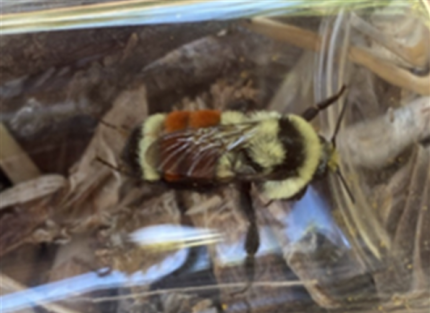
Small Bat in a Tight Spot: On Thursday, Aug. 10, Sherman Creek Wildlife Area Manager Anderson heard a thunk on an office window, as something small and dark hit the metal grid over the window. Inspection found a bat (appeared to be a little brown bat) had crawled through the grid and wedged itself between the grid and the window. Sherman Creek Wildlife Area Natural Resources Technician Zueger assisted Anderson to loosen the bolts holding the corner of the grid to the window, and propped it open a bit. The bat dropped down below the sill to hang, still behind the grill. They left the grid corner propped over the weekend for the bat to easily escape.

Chronic Wasting Disease Samples: Natural Resource Technician Harris collected a CWD sample from a roadkill deer in GMU 121.
Acting Private Lands Biologist Nizer took samples from two roadkill mule deer in Whitman County.
Natural Resource Technician Heitstuman checked local pits for CWD samples. Two samples were collected. Better notification was discussed on sampling opportunities.
Providing Recreation Opportunities
Trail Clearing: Sherman Creek Wildlife Area Assistant Manager Palmer and Natural Resource Technician Zueger used a mini-excavator, power tools, and hand tools to clear out portions of the Columbia River trail that runs south from Sherman Creek Wildlife Area headquarters past Sherman Creek Hatchery and down to Haag Cove.
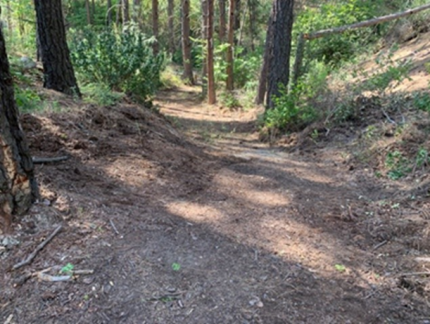
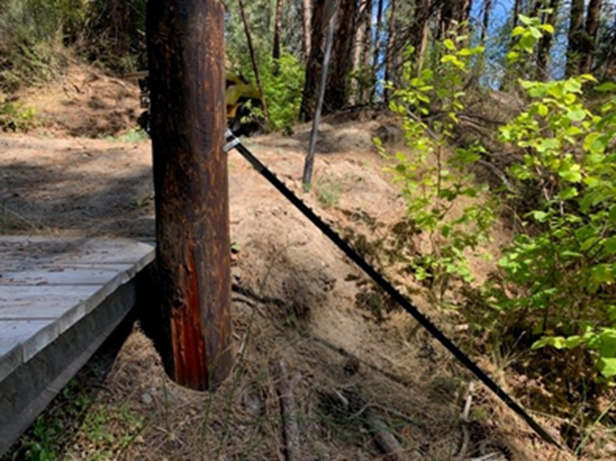
Blue Green Algae Blooms: Rainbow Lake is currently having a blue green algae bloom. Wildlife Area Manager Dingman is working with the Columbia County Health Department to get the water tested for toxins. Warning signs were posted at all access points to the lake. Watson Lake and Spring Lake are experiencing algal blooms and are being monitored for blue green algae.

ADA Hunting Access: Natural Resource Technician Harris spoke with a disabled hunter looking for ADA hunting access for moose hunting in GMU 117. Harris provided the hunter with information about the Mitchell Mountain disability hunter access and contacts for Colville National Forest and Inland Northwest Wildlife Council Disability Access Committee. Upon request, Harris forwarded the hunter’s contact information to district biologists for more information regarding moose populations in GMU 117.
Turnbull Hunt by Reservation: Acting Private Lands Biologist Nizer coordinated with the Turnbull Wildlife Refuge by getting the agreement signed for this upcoming season.
Terminally Ill Hunter: Wildlife Conflict Specialist Kolb conducted coordination with a terminally ill hunter issued a permit from WDFW for the GMU 149 Prescott. Kolb spoke with landowner on behalf of the hunter who will be traveling from out of state to conduct the hunt.
Youth Mentor Hunt: Acting Private Lands Biologist Nizer coordinated with Jason Cushman with Pheasants Forever to coordinate the youth mentored hunt that will be taking place this fall for the youth opening weekend hunt. Properties in the reservation program are being coordinated to be reserved for this hunt.
Providing Conflict Prevention and Education
Depredation Investigation: WDFW staff members responded to a report of a dead calf being found on a United States Forest Service allotment. The calf was located partially submerged in a pond. WDFW staff members documented the area and removed the calf carcass from the pond to conduct a necropsy. They documented injuries constituent with a probable wolf depredation. Wolf tracks were documented roughly half a mile from the carcass and collar data showed that the collared animal from the 139 group had been in the area for several days. The investigation determination was probable wolf depredation
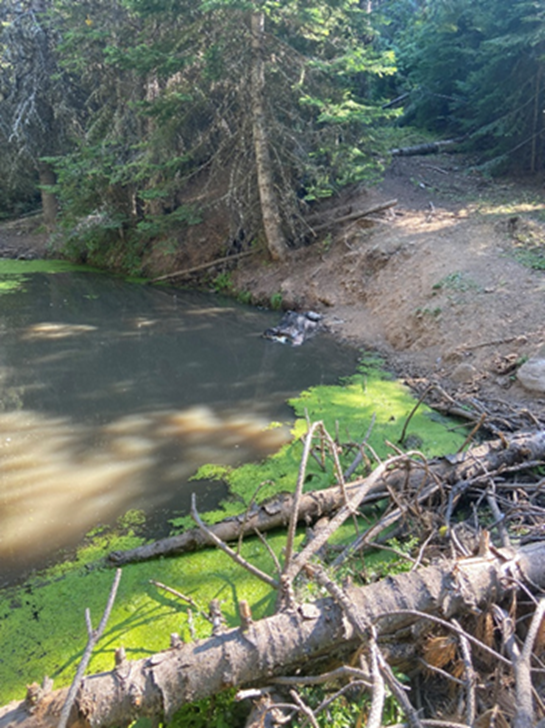
Potential Contract Range Rider Calls: Wildlife Conflict Specialist Wade reached out to two potential contract range riders this week. Both said they would call back to discuss the program and their potential interest when time allowed.
Conserving Natural Landscapes
Bureau of Land Management/Ducks Unlimited Project Tour: On Wednesday, Wildlife Area Manager Finch met with staff members from the Spokane District Bureau of Land Management (BLM), Ducks Unlimited (DU) Engineer Heck and DU Biologist Blewett at BLM’s Oliger property along Telford Road to discuss opening up a wetland area with a concrete flood control structure that was built around 2000 but had silted in to just a small stream running down the property. The discussion was to determine where to stack the spoils that had been already culturally cleared by the BLM archologist. The other discussion was to use the Swanson Lakes Wildlife Area staff members, already funded through an existing BLM agreement, to accomplish the work.

Conservation Reserve Program: Acting Private Lands Biologist Nizer assisted Rock Lake Conservation District in mowing a site for weeds next to a creek area. This site was recently planted with native shrubs this last fall by WDFW staff members and seeded with perennial grasses.
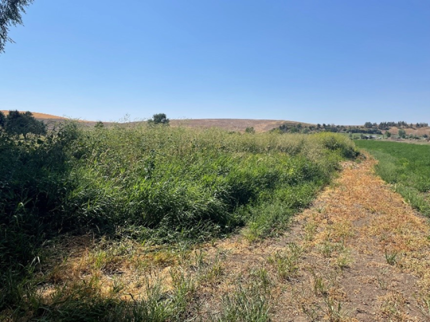
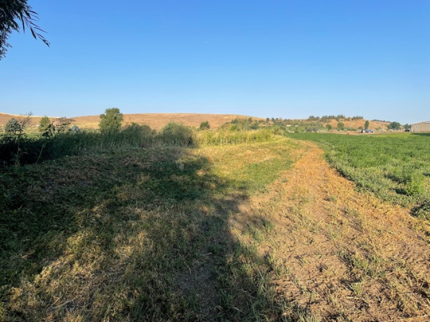
Turkey Proposals: Private Lands Biologist Hadley received information for project proposals from WDFW and the National Wild Turkey Federation to pass on to partners that may be interested. Hadley discussed a potential project partnership with the Corps of Engineers and will follow up next week with more details.
4-O Ranch Wildlife Area Bucannon Field Restoration: Biologist Woodall spent the week traveling to the 4-O Ranch and mowing weeds out of the Bucannon field. In spring 2023, this field was planted with orchard grass. This field has been a hotbed of weed infestations. We chose orchard grass to compete against weeds and provide good forage for elk.
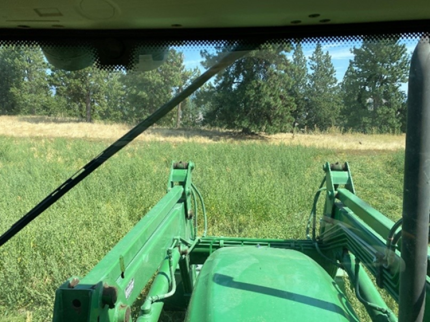
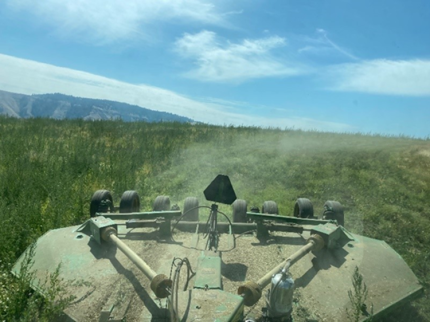
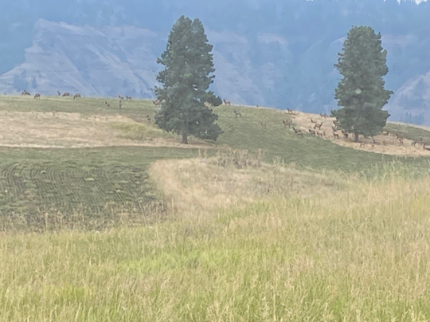
Habitat Improvement Planning: Natural Resource Technician Harris met with a Hunting only by Written Permission cooperator to discuss potential habitat improvement projects for waterfowl, deer, and upland game species.
Sourcing Seed and Plants: At the request of the Private Lands Biologist Baarstad, Natural Resource Technician Heitstuman was able to source and secure a minimum of 200 pounds of fall canola seed for planting. The seed will be delivered to the St. John office on Aug. 15 where it will be picked up and taken to the Swanson Lakes Wildlife Area for planting.
Providing Education and Outreach
Hunter Education: Wildlife Conflict Specialist Kolb set up venue locations for a September Hunter Education traditional class and a separate online class field day.
Rocky Mountain Elk Foundation 2023 Rendezvous: Wildlife Area Manager Dice put together a Power Point presentation on Lick Creek fire recovery projects and past Rocky Mountain Elk Foundation (RMEF) volunteer activities on the Asotin Creek Wildlife Area and presented it to RMEF members at their 2023 Rendezvous at White Pass on Saturday. The presentation went well and was appreciated by the members.
National Hunting and Fishing Day Preparation: Wildlife Conflict Specialist McCarty assisted with organizing presenters for the National Hunting and Fishing Day that will be held in District 1 per request of Volunteer Coordinator Dazey.
Conducting Business Operations and Policy
Pasture Ride Along: Wildlife Conflict Specialist Kolb conducted a ride along with a producer on private pasture in Touchet pack territory. Kolb assisted the producer with trail camera set up as well as documenting wolf signs in different areas of the pasture.
District 3 Draft Lethal Removal Recommendation Meeting: Wildlife Conflict Supervisor McCanna facilitated a meeting to start the draft lethal removal recommendation process for the WA139 wolf group. McCanna made assignments for staff members to start filling in portions of the recommendation. McCanna will call another meeting if we have another confirmed wolf depredation.
Cattle Producers of Washington Board Meeting: Wildlife Conflict Supervisor McCanna attended a special board meeting to discuss the new Department of Agriculture grant received. We then met with the range riders to review and sign new contracts, discuss WDFW expectations for their handwritten logs, and install the new software upgrade on their InReach devices.
Other
Weather Event: On Monday, a severe thunderstorm rolled through the area and knocked out the power for over four hours and dropped rainfall over one inch. In some locations, rainfall measured closer to two inches.

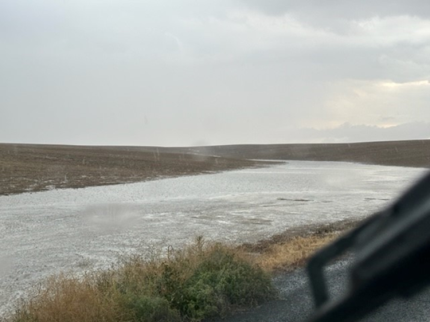
Managing Wildlife Populations

Bumble Bee Survey: Biologists Jeffreys and Eilers and Scientific Technician Pavelchek completed bumble bee surveys in two more Chelan County grid cells, one in the Mills Canyon area of the Swakane Wildlife Unit and one near Fish Lake. Fortunately, there were plenty of bees to be caught, and biologists captured 20 bumble bees, including at least six species, at the Mills Canyon survey site, and 28 bees, of at least three species, at the Fish Lake site. Habitat data were collected for each grid including identifying and photographing flowering plant (food source) species. The increased bee species diversity encountered at Mills Canyon may in part have reflected the greater diversity of flowering plants available at this site.
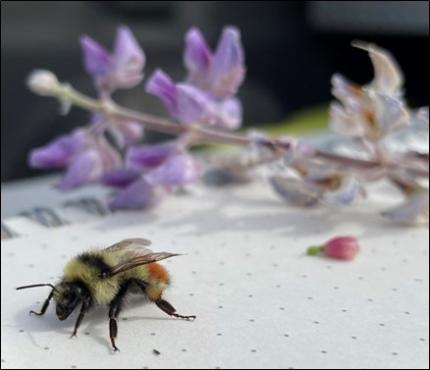
The data collected from this survey were entered into the Pacific Northwest (PNW) Bumble Bee Atlas online database. The PNW Bumble Bee Atlas is a collaborative effort between Washington Department of Fish and Wildlife (WDFW), Idaho Department of Fish and Game, Oregon Department of Fish and Wildlife, and the Xerces Society for Invertebrate Conservation to track and conserve the bumble bees of Washington, Idaho, and Oregon.
Biologist Heinlen conducted bumble bee surveys within District 6. These surveys address bumble bee distribution, health, and habitat needs across Washington.
They note any detections of the three Species of Greatest Conservation Need: the Morrison’s, western, and Suckley cuckoo bumble bee. Biologist Heinlen did detect the western bumble bee. More information about WDFW Species of Greatest Conservation Need can be found here in the State Wildlife Action Plan (SWAP) | Washington Department of Fish & Wildlife

Bat Monitoring: Biologists conducted emergence counts at three more known bat colonies in Chelan County: a barn on Entiat River Road, Lake Chelan State Park housing, and a United States Forest Service warehouse near Lake Wenatchee. The Entiat and Lake Chelan sites have been monitored the previous two summers, and counts were down this year. However, chattering was heard in the roof of the house at Lake Chelan State Park even after the exit appeared to be over, and much chattering was heard in the warehouse by Lake Wenatchee, as well. As these are maternity roosts, this suggests pups here may not be volant (able to fly) yet, which could be the reason for the smaller numbers of bats seen exiting this year. Although counts were conducted in the same time frame as last summer, it’s possible that this year’s cool, wet spring and early summer may have delayed parturition. Biologists will return to these sites in early August to determine whether numbers of exiting bats have increased as one would expect when pups are able to fly. The Entiat barn hosts a colony of big brown bats (Eptescus fuscus), while it appears that the warehouse by Lake Wenatchee hosts a multi species colony like that occupying Lake Chelan State Park housing, a mix of little brown myotis (Myotis lucifugus) and Yuma myotis (Myotis yumanensis).
Ptarmigan: Research Scientist Schroeder and Biologist Heinlen spent two days in the Pasayten Wilderness monitoring the Mount Rainier white-tailed ptarmigan (Lagopus leucura rainierensis). We documented several ptarmigans including one hen with three chicks, three previously banded males (one that is five years old, two that are three years old), and we banded a female. A remote camera was placed to monitor ptarmigan use of snow fields, as has been done over the past couple of years. This work informs management of ptarmigan in Washington which are currently proposed for federal listing. Information about the life history, habitat needs, and status of this subspecies of Ptarmigan can be found here at the United States Fish and Wildlife Services Species Status Assessment.
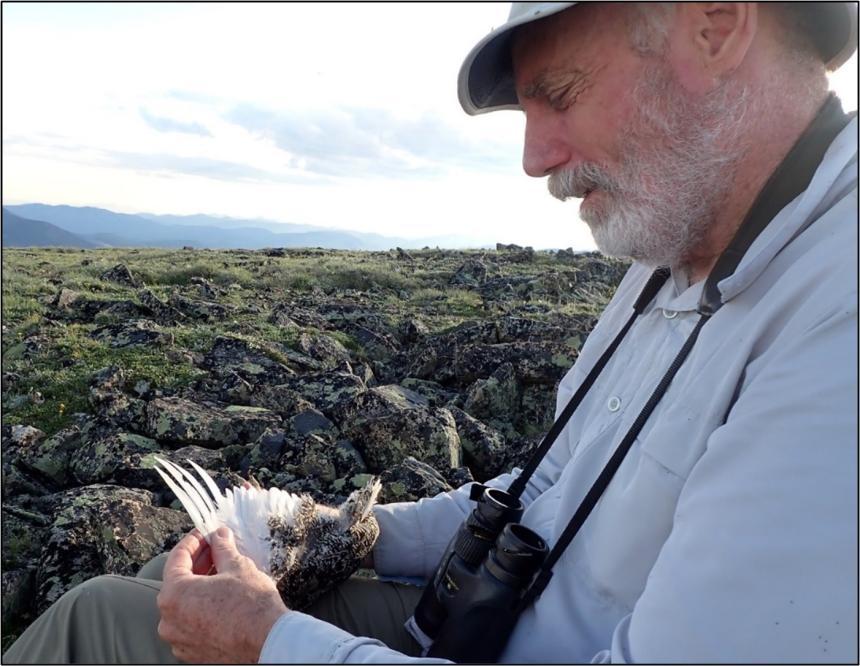
Washington Wolverine Survey: The Washington wolverine survey is part of a western multi-state effort to determine current baseline distribution, occupancy, and genetic characteristics of wolverines. The survey consists of setting up remote cameras in the fall with an automated dispenser that releases scent throughout the survey and gun brushes to passively collect hair for genetic analysis. Biologist Heinlen and Volunteer Fischer pulled sets near Windy Peak and Thunder Mountain in District 6. Even though no wolverines were detected at these two sites several other species including other rare carnivores were detected, including lynx, wolf, and fisher. You can find out more about this project at Western States Wolverine Conservation Project: results of the Washington Wolverine Survey, Winter 2016-2017 | Washington Department of Fish & Wildlife.
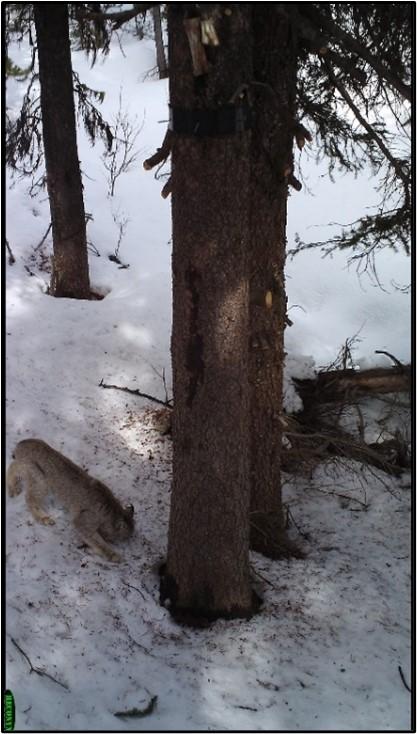
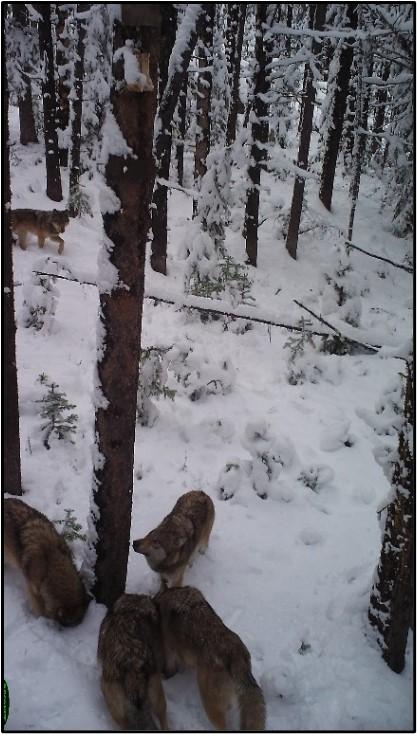

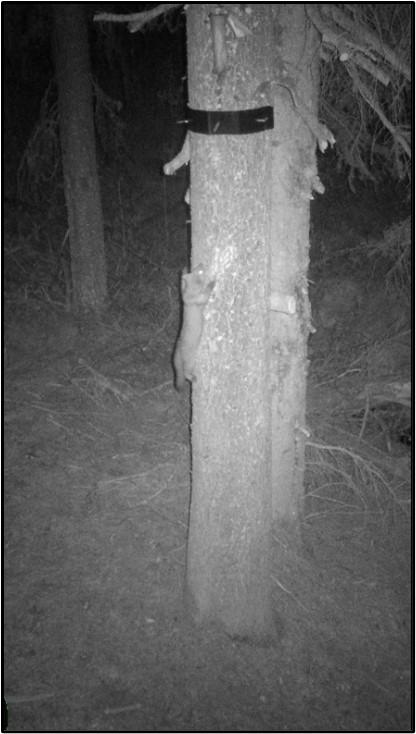
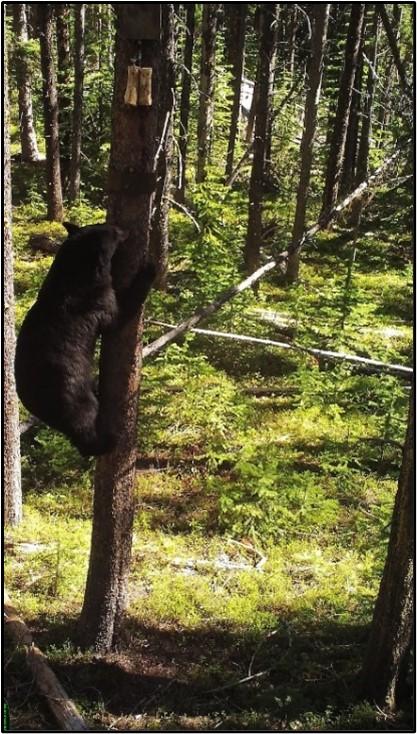
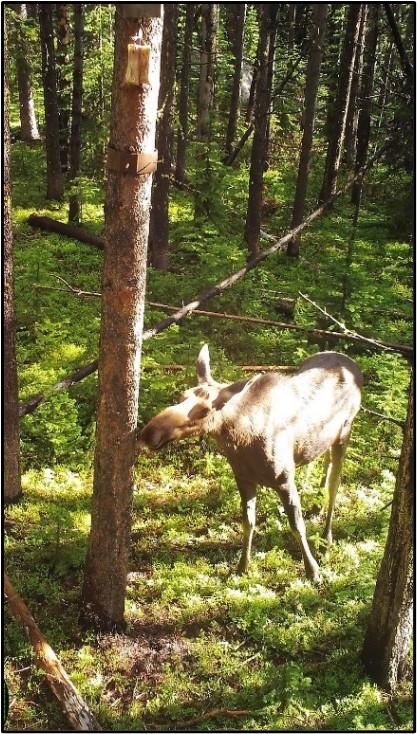
Providing Recreation Opportunities
Sinlahekin Campground Renovations: Sinlahekin staff members finished up the campground upgrades by installing gravel on some of the access roads to the campgrounds that were in much need of repair, along with adding gravel to many of the camping pads at the various campgrounds. Staff members also installed parking bumpers and gravel around the picnic tables that were installed at some of the sites. This has been part of the Recreation and Conservation (ROC) campground renovations grant. Many of these sites are used regularly and are a big hit with campers. We have received many thanks from the public on the upgrades.

Providing Conflict Prevention and Education
Range Riding: Specialist Heilhecker met with a rancher to sign a new damage prevention cooperative agreement. The agreement cost-shares range riding activity in the Beaver Creek territory.
Deer and Elk Exclusion Fencing: Specialist Heilhecker continues to work on ordering fencing materials for signed cost-share fencing agreements. Prices for steel T-posts and woven wire from the vendor on state contract are unreasonably high so she is getting bids for fencing materials to justify purchasing off-contract. The wood posts were delivered to a central location in Okanogan County. The vendor will arrange to have the wood posts delivered to each landowner’s property.
Elk Damage: Specialist Heilhecker received a call regarding elk damage. The landowner stated he hazes the elk each evening, by riding his motorcycle and chasing the elk until they go back onto national forest. He also provided three links to YouTube videos of elk and elk signs on their property. There is an active damage prevention cooperative agreement for the property. Specialist Heilhecker issued him a landowner kill permit.
Osprey Young Recovery: Specialist Heilhecker spoke to a landowner who found an osprey nest on the ground. The landowner stated the pin feathers on the three young were mostly gone. His neighbor found a list of rehabilitators on the WDFW website. They found a rehabilitation facility willing to take the osprey and will drive the birds to the westside of the state.
Reducing Deer and Elk Damage to Crops: Specialist Bridges continues to work with a multitude of landowners in assisting with attempts to decrease damage from deer and elk.
Preventing Dangerous Wildlife Encounters: Specialist Bridges has spent a considerable amount of time working with the City of Leavenworth and various non-governmental organizations (NGO) to begin reducing a major wildlife attractant, garbage cans at the school. Funding continues to be challenging, but Bridges is working with NGO partners to secure needed resources. Specialist Bridges met with the Leavenworth’s public director to discuss fencing designs, permitting, and fencing functionality of design for compatibility with garbage pickup trucks.
Sheep and Goat Fencing Project: Specialist Bridges has been working the last five months to address domestic and big horned sheep disease concerns by working with a private landowner, Wild Sheep Foundation, and the Asotin County Conservation District. Fencing work to keep domestic sheep from interacting with wild sheep began on the July 25 and should take three to four weeks to complete.
Conserving Natural Landscapes
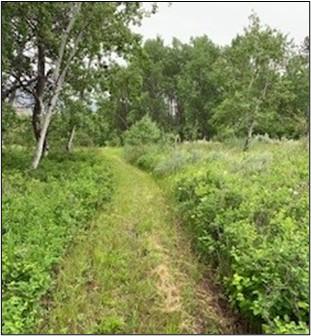
Unauthorized Trail Mowing on Methow Wildlife Area: Assistant Manager Repp confirmed the illegal mowing and contacted Officer Day. His investigation revealed that a neighboring landowner had been doing the mowing. Officer Day contacted the landowner. Coincidently the landowner is in the process of selling part of his property and the real estate company is advertising the unauthorized trails.
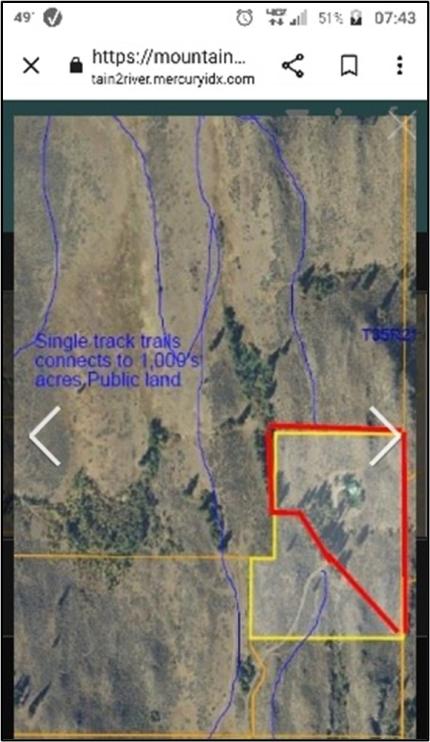
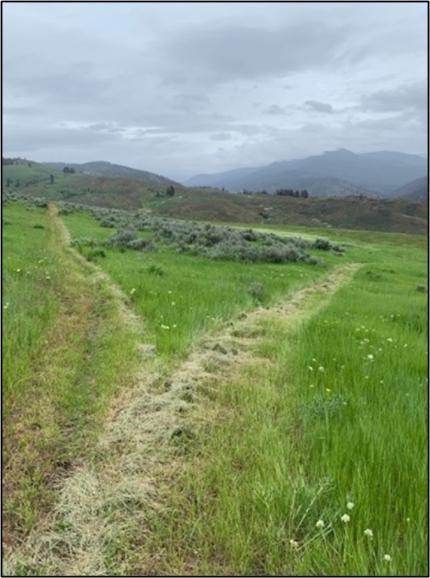

Sinlahekin Wildlife Area Noxious Weeds: Sinlahekin staff members have been treating noxious weeds on the Chiliwist Unit. They have been using a variety of methods to treat the weeds from herbicide to hand pulling. This continued treatment has made a noticeable change in the amount of Scotch thistle on the unit. Staff members will continue to treat the Scotch thistle throughout the summer. Some of the plants have started to bolt, staff members will be clipping seed heads and spraying rosettes.
Scotch Creek Wildlife Area Noxious Weeds: Staff members started their annual control efforts of musk thistle on the Chesaw Unit. The infestation is widespread across the unit with plants in varying stages of maturity. Control efforts are currently focused on the south slopes at the lower elevations. Staff members also spot treated annual and perennial weeds in a native grass seeding planted in 2015. The seeding was mowed last fall to prep for the spot treatment.
Methow Wildlife Area Noxious Weeds: Staff members spot treated 26 acres for houndstongue primarily in the Rendezvous Unit. They will continue treatments in June weather permitting. They received a complaint that someone had been mowing miles of unauthorized trails in the Little Cub area of the Rendezvous Unit.
Scotch Creek Riparian Restoration Project: Staff trimmed the grass around most of the newly planted shrubs in the project area. Trimming prevents the grasses from shading out the newly planted shrubs.
Habitat Plots: Biologist Cook applied herbicides to a failed irrigated food plot to prepare for planting again this summer. Cook applied herbicides on another habitat site to control weeds prior to planting this fall with native grasses. The herbicide appears to be working well.
Biologist Cook also visited food plots planted this spring. Two of the three plots are not growing well, and irrigation failures may be the primary factor. Low germination of a seed batch may be another factor because some species are growing better than others.
They also planted triticale in a wildlife food plot that had poor establishment earlier in the year. Wildlife food plots provide standing forage in the fall and winter that can help support a wide variety of wildlife, including big game, small game and upland birds, and non-game birds and small mammals.
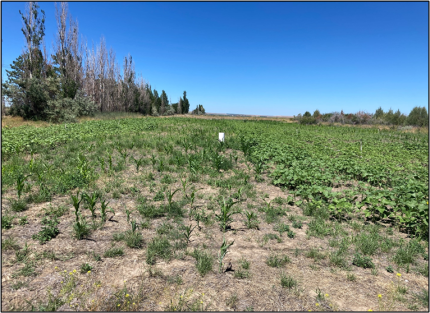
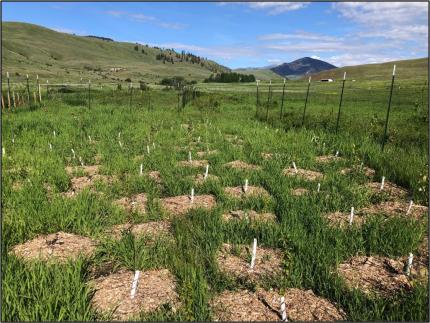
Okanogan Lands 20/20 Project Submittals: Okanogan Lands Operations Manager Haug submitted five applications for acquisitions in Okanogan County. The projects protect critical shrub-steppe and riparian habitats and increase recreation opportunity in the area. The applications will be reviewed later this month and then presented to staff members in Olympia for approval.

Habitat Project Maintenance: Private Lands Biologist Braaten mowed around trees and shrubs on the Rice Alling project site.
Douglas County Wildfire: Private Lands Biologist Braaten was called by landowners about wildfire in Ragged Butte area in Douglas County. It was put out by fire fighters after it burned around 500 acres. This area was very ruffed and rocky but was adjacent to critical habitat for sage grouse and State Acres for Wildlife Enhancement (SAFE) Conservation Reserve Program (CRP) fields.
SAFE-CRP: Private Lands Biologist Braaten met in person and called several landowners who have showed interest in signing up into SAFE. Douglas County Farm Service Agency (FSA) is waiting to find out if there are any acres available for SAFE and asked Biologist Braaten to let landowners know there may be an opportunity and to call and get on list.
In Douglas County, Wildlife Programs Biologist Morris worked on a conservation plan for SAFE-CRP that is being re-enrolled this year. This included assessing the existing vegetation in the landowner’s fields for wildlife habitat value, determining if changes need to be made to the enrolled fields, and planning what implementation and management actions need to be done to maintain high wildlife value on the field. This work will directly benefit wildlife by keeping agricultural land in high quality native vegetation that provides forage, cover, and pollinator habitat that supports a more healthy and diverse wildlife population.
Providing Education and Outreach
WDFW Staff Member Tour with Methow Conservancy: Methow Wildlife Area Staff Troyer, Repp, and Wottlin, along with Prescribed Burn Lead Eberlein and Lands Operations Manager Haug, met with the Methow Conservancy to tour forest health treatments in the Ramsey Creek area. The tour consisted of conservancy staff members, Womens Army Auxiliary Corps (WAAC) members and interested citizens who wanted to learn more about prescribed burning and forest health. Also helping on the tour was University of Washington Research Scientist Pritchard who provided technical knowledge regarding fire ecology. WDFW staff members provided information on fuels treatments, prescribed burn info and an overview of agency interest in forest health. Reviews of the tour were very positive with participants expressing how much they learned over the half day adventure.
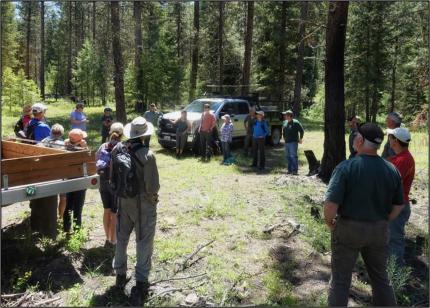
Douglas County Waiver Listening Session: Congresswoman Schier hosted a listening session in Marysville to discuss a CRP waiver issue. Private Lands Biologist Braaten contacted a few landowners to be participants, offer support, and discuss. One landowner attended.
Responding to Hunters Questions: Specialist Bridges has been responding to numerous calls from successful special permit holders for the Peshastin and Malaga hunts.
Conducting Business Operations and Policy
Sinlahekin Assistant Manager Onboarding: Assistant Manager Riley completed his training to get his wildland red card certification. The next step to get his full certification is completing the pack test which he has scheduled. All staff members on the Sinlahekin will be red card certified and ready for the wildland fire season. Hopefully they won’t need to use their training this year.
Pheasants Forever Meeting: Biologist Cook and Morris attended parts of the local chapter of Pheasants Forever to discuss potential collaboration and field work WDFW might do with some habitat improvement projects. Cook had the opportunity to meet with a Pheasants Forever Biologist to discuss further collaboration and assistance.
Private Lands Workshop: Private Lands Biologists Braaten, Morris, Cook and Rickel attended the Private Lands workshop in Ellensburg with staff members from around state. They met to receive training and discuss issues related to the Private Lands program. Biologist Morris and Cook gave a presentation and led a discussion on using GIS for Private Lands, Biologist Braaten led a discussion on New Techniques/tools/equipment/herbicide and other biologists gave presentations/discussions on various topics including seed mixes, equipment to use, etc. The discussions were very beneficial for sharing ideas and learning.
Other


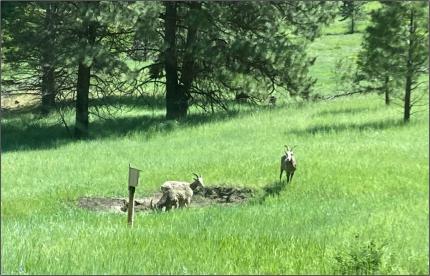
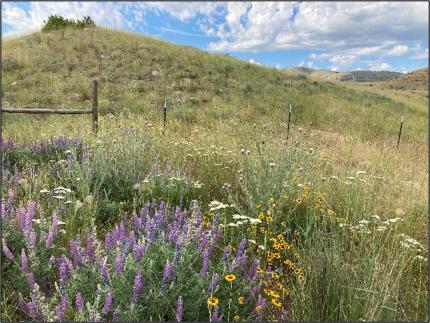



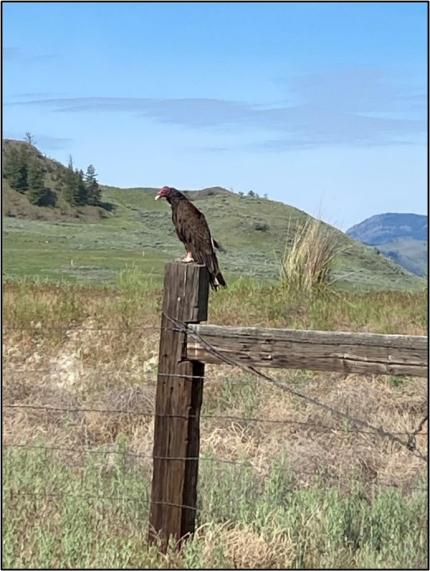
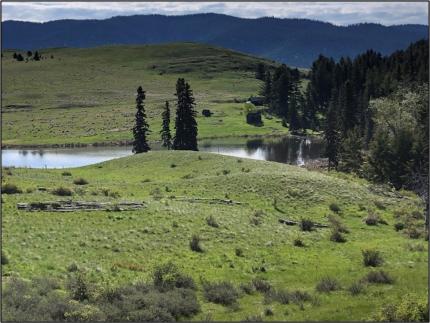
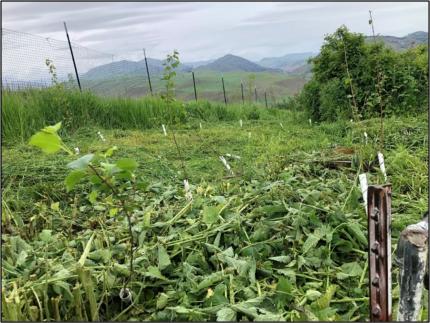


Managing Wildlife Populations
Sunnyside Wildlife Area Bats: Sunnyside Snake River Wildlife Area Manager Kaelber, Assistant Manager Jahns, and Natural Resource Technician Manderbach conducted an emergent bat count at Sunnyside Headquarters. In total, 230 bats were observed exiting four different roost boxes after sunset.
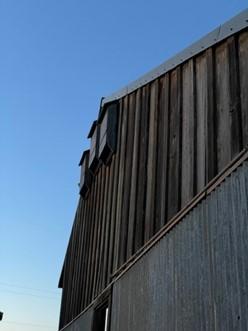
Burrowing Owl Research: District 4 Wildlife Biologist Fidorra investigated a transmitter failure from this spring’s burrowing owl tagging study. A transmitter had stopped sending data, but the male owl was still observed alive on site. Fidorra recaptured the owl and removed the non-working harness to unburden the animal and determine cause of tag failure. The tag will be sent to the manufacturer for study.
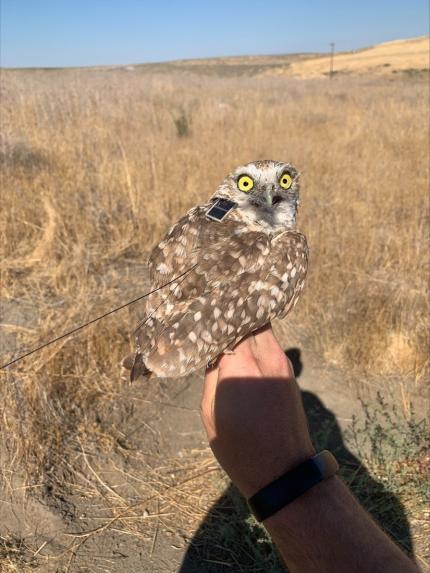
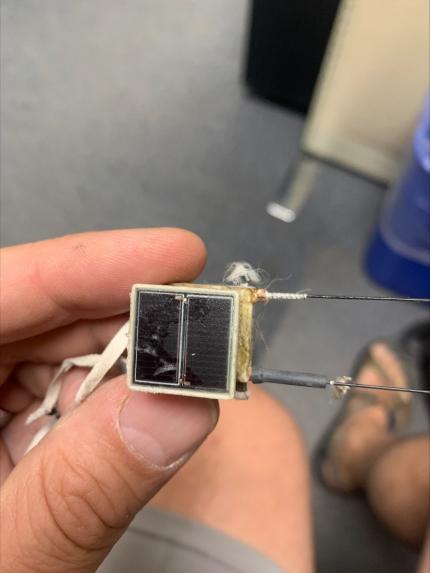
Monarchs Return to Washington: Several monarch butterflies have been seen this month in District 4 and 3.

Waterfowl Banding: District 4 Wildlife Biologist Fidorra and Natural Resource Technician Manderbach and Scientific Technician Kleinhenz installed duck traps on the Sunnyside Wildlife Area and McNary National Wildlife Refuge trap sites. The late cold spring likely set birds back a bit, but we are starting to see good numbers of hatch year mallards now coming to our main site with 70 birds captured on the first day of banding. Several district staff members and volunteers will help bait sites and band ducks through mid-September.
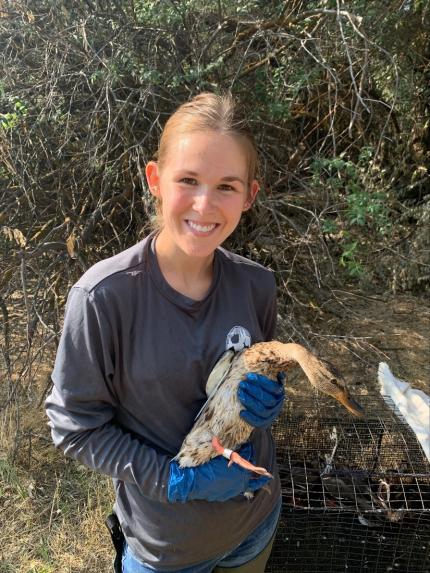
Providing Recreation Opportunities
Wenas Wildlife Area Durr Road Target Shooting Area Clean Up: Natural Resource Technician Frame collected 250 pounds of dumped trash and target shooting trash at the Durr Road target shooting site. Items consisted of plywood, a television, and miscellaneous target shooting material.
Wenas Wildlife Area Manastash Ridge Trails Inventory: Natural Resource Scientist Frame has been conducting a trails inventory on the north and south side trail systems. This includes mapping new unapproved user-built trails, ensuring existing trail maps are correct, searching for unauthorized trail maintenance, and reviewing approved sections of trail for future maintenance projects. Larger trail maintenance projects are in the planning stage for the approved trails on the north side of the ridge.
Wenas Wildlife Area Sheep Company Shooting Range: Biologist Miller treated the Sheep Company shooting range for weeds, specifically Russian thistle. Keeping weeds out of the developed shooting area is crucial to preventing fires at the shooting site. It in addition, it provides a nicer area for people to recreate in.
Private Land Access Programs Prepare for Season Openers: District 4 Wildlife Biologist Fidorra and Private Lands Technician Manderbach contacted landowners and updated access properties for the upcoming Sep. 1 deer archery and dove season openers. Manderbach mowed parking areas and checked/installed signs at several properties.
Providing Conflict Prevention and Education
Rattlesnake Hills Elk Hazing: District 4 Wildlife Conflict Specialist Hand continued to spend time hazing elk near the top of Rattlesnake Mountain. Animals are continuing to leave the Hanford site to forage in winter wheat crops on the southern exposure of Rattlesnake Mountain mostly during nocturnal hours. Fox lights were checked and are in working order.
Corral Canyon Wheat Harvest: District 4 Wildlife Conflict Specialist Hand worked with wheat harvest operations to document crop damage impacts from Hanford elk. Rain showers occurred for several days which has delayed harvest operations. Fields are continuing to produce near or above average bushels per acre.
Horn Rapids Deer Damage: Hand continued to work with a large wine grape operator near the Yakima River to address deer activity and damage within several areas of their vineyard. Non-lethal hazing has been ongoing, and a couple of damage permits were recently issued.
West Richland Deer: Hand is working with a owner of several small corn fields that have been damaged by an increasing number of deer near the Yakima River. In addition to hazing, plans are to implement some Master Hunter opportunities from the Region 3 list next week.
Finley Skunk: Hand received and responded to a homeowner in Finley concerning a skunk that has been living under a crawl space at their residence. Several deterrence strategies were discussed as well as trapping techniques for skunk removal.
Rattlesnake Hills Master Hunter Hunts: Hand coordinated with Hunt Coordinator Erickson on master hunter activity and elk movements on Rattlesnake Mountain. During a weekend patrol Hand checked one Master Hunter with a harvested cow elk and contacted another Master Hunter driving on private property without proper landowner permission.

Rattlesnake Mountain Sick Elk: District 4 Wildlife Conflict Specialist Hand coordinated with a Master Hunter who put down a very old sick cow elk on private property near Hanford. The animal could not stand and was in extremely poor condition.
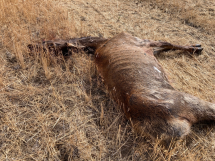
Sunnyside Wildlife Area Sick Deer: Hand responded to a call of a sick deer walking in circles at the Sunnyside Wildlife Area with wildlife area and enforcement staff members to collect samples for disease testing. Unfortunately, we were unable to locate the deer.
Kittitas County Conflict: District 8 Conflict Specialist Wetzel worked with several hay growers who were having problems with elk in crops. Elk complaints were reported in Badger Pocket, Kittitas, Peoh Point, Park Creek, and the Teanaway area. Natural Resource Technician Leuck has been working nights at those locations hazing elk. Two light plants were installed at one field to deter elk in the Badger Pocket.

Yakima County Conflict: Wetzel worked with several hay and orchard growers who were having problems with elk in crops. Elk complaints have come from the Naches River and the Nile, most of which are small hay operators.
Other: Wetzel investigated a repeat sheep depredation at one location.
Conserving Natural Landscapes
L. T. Murray Wildlife Area 2022 Vantage Fire Restoration: Cultural Resource Specialists Major, Shellenberger, and Yamamoto, Environmental Planner Merg, and the L. T. Murray Wildlife Area Manager Morrison made field visits to the 2022 Vantage fire scar to discuss the Phase 1 planting schedule, methods, and cultural resource needs in the culturally and ecologically rich Whiskey Dick and Quilomene units. With cultural review currently in motion, restoration planting of roughly 500 acres of upland sagebrush steppe habitat is scheduled to begin by the week of Oct. 16.
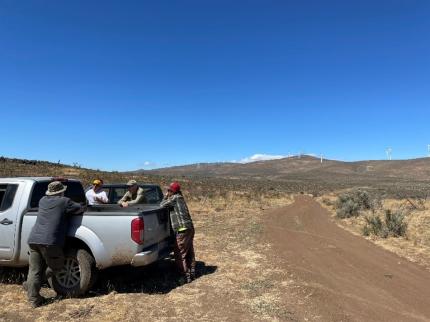
L. T. Murray Vegetation Management: While controlling non-native plants, L. T. Murray Natural Resource Scientist Nass found Solanum triflorum or cut-leaf nightshade at the Corrals parking area. Though commonly viewed as an agricultural pest or weed, this is a native plant to parts of the western United States and found in disturbed habitats like the new fire scar at Corrals. Traditionally, native tribes would use it medicinally for gastrointestinal issues and occasionally eat it as food, but it isn’t as desirable as other traditional foods. You never know what you can find out there!
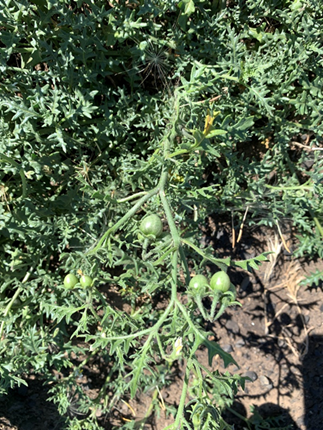

Sunnyside Snake River Wetland Management: Sunnyside Snake River Wildlife Area Manager Kaelber, Assistant Managers Jahns, and Ferguson continued to prep wetlands within the Windmill Ranch and Sunnyside Headquarters Unit. Windmill Ranch’s Phase 3 wetland has been mowed and seeded with buckwheat. The Rice Paddies Wetlands are also being mowed in preparation for reflooding this fall. Natural Resource Technicians Manderbach and Jahns also mowed phragmites within the Clark Pond Unit with the Marsh Master to prevent further spreading of the invasive plants on neighboring private property.


Wenas Wildlife Area Weed Control: Wenas Wildlife Area Biologist Miller has been surveying and treating weeds in the NJK acquisition on the Wenas Wildlife Area. This area has minimal infestations so early treatment is important to prevent further spread of noxious weeds. Primary target species have been houndstounge and Canada thistle. Biologist Miller has been preparing for the fall spraying of knapweed by prioritizing areas of previous treatment as well.
Oak Creek Wildlife Area Weed Control and Monitoring: Oak Creek Assistant Wildlife Area Manager Charlet and Natural Resource Technician Boggs conducted herbicide control of Canada thistle within a high elevation meadow near Bald Mountain. This has been a multi-year effort and significant reduction in germination was seen this year. However, significant motorized off-road disturbance was documented this year, resulting in a volunteer fencing project during this same reporting period to eliminate further disturbance. Oak Creek staff members also monitored previous treatment areas for efficacy and surveyed new areas where future noxious weed control will be prioritized, including a new infestation of yellow star-thistle.
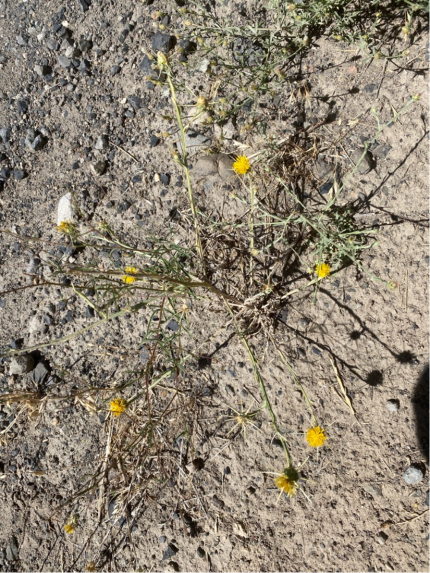
Oak Creek Wildlife Area Rocky Mountain Elk Foundation Volunteer Fencing Project: Oak Creek Wildlife Area Manager Mackey met with 23 volunteers affiliated with the Rocky Mountain Elk Foundation (RMEF) to construct no-dig buck and rail fencing along an adjacent road to a meadow in the Bald Mountain area of the Rock Creek Unit. This meadow has seen repeated disturbance over the years with motorized traffic driving off-road and rutting and disturbing the meadow in which we have actively been managing Canada thistle in-growth. The new fence will hopefully discourage off-road driving along this section. The fence was constructed with treated posts and natural railing sourced nearby. Twenty-four individuals participated in this event that took approximately 12 hours including travel time. The group was later than expected getting back, but the majority of participants wanted to continue until the project was completely finished. RMEF provided hydration and lunch while Oak Creek provided tools and materials for the project. It was a great success!

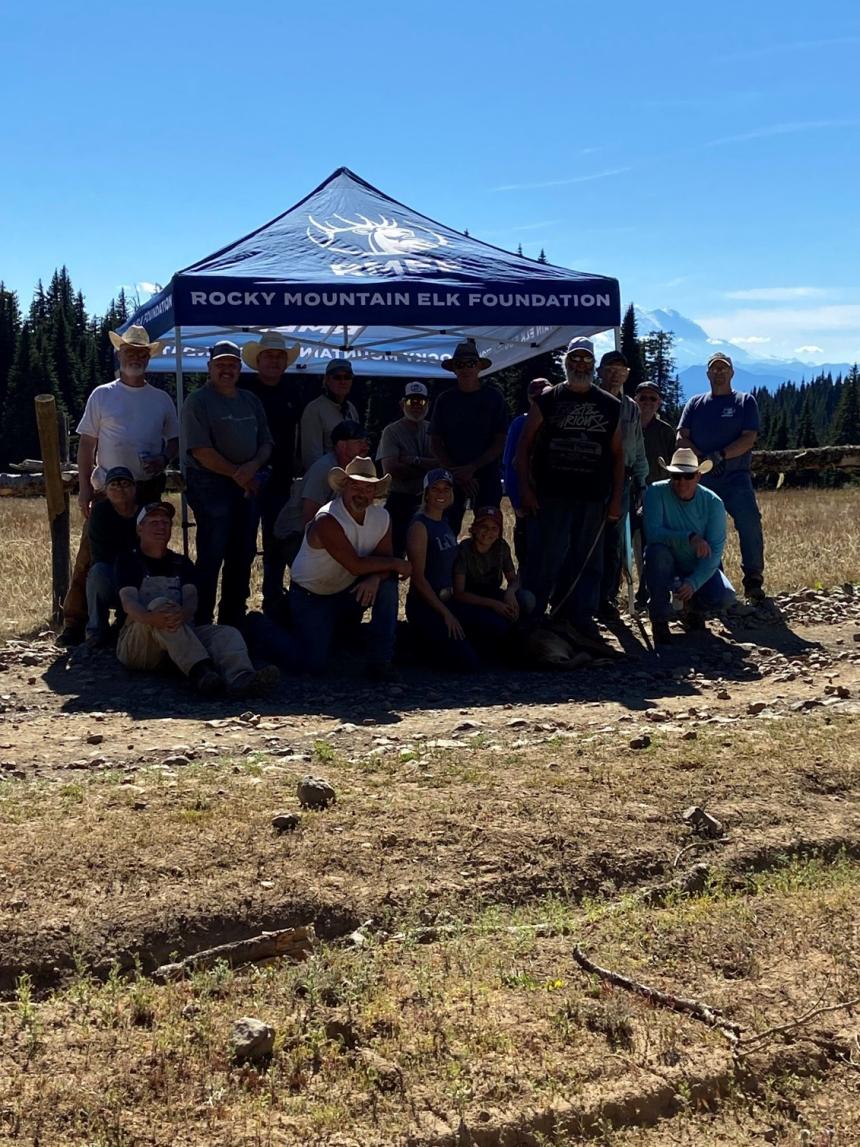
Oak Creek Wildlife Area Elk Fence Damage and Repair: Oak Creek staff members repaired a small section of elk fence that was destroyed by users traveling a closed road and crossing onto private property. WDFW enforcement officers are investigating the matter.
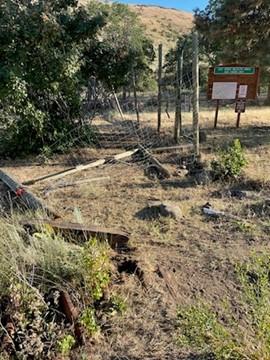
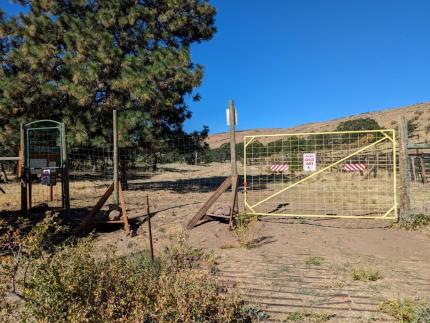
Providing Education and Outreach
Pack it in, pack it out: Pumphouse Road and Watt Canyon kiosks on the L. T. Murray now have litter bags for public use! Dispensers have only been up for roughly a week, but we anticipate good pack-in and pack-out use.


Other
Sunnyside Snake River Monarch Butterflies: Sunnyside Snake River Wildlife Area staff members have observed monarch butterflies in large patches of milkweed within the Windmill Ranch Unit.
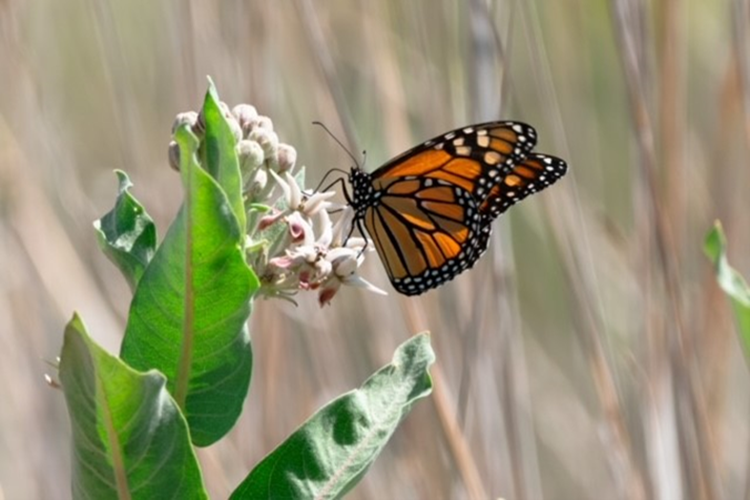
Managing Wildlife Populations
Klickitat County Bat Count: Biologist Wickhem conducted a bat count in Klickitat County with the help of Volunteers Flick, Hadley, and Robinson. A resident had reported a maternity colony (where numerous female bats give birth and rear their pups until they can fly) in the attic of a building on the property they manage. Earlier in the summer, the bats had deposited a large amount of guano in the attic. The bat team set up in strategic locations around the building to attempt to count the bats as they exited. Unfortunately, they only recorded one bat leaving the building during the survey. However, the team noted numerous bats flying past the building from what seemed to be a different, nearby location. It’s possible that the pups are now able to fly on their own and the bats recently moved into another roost on the property. The team did collect several recordings on an echolocation acoustic recorder that will be analyzed to determine what species were flying past the building. Wickhem will work with the landowner to determine where the bats are roosting now, and to schedule a follow-up survey next year, but earlier in the summer.
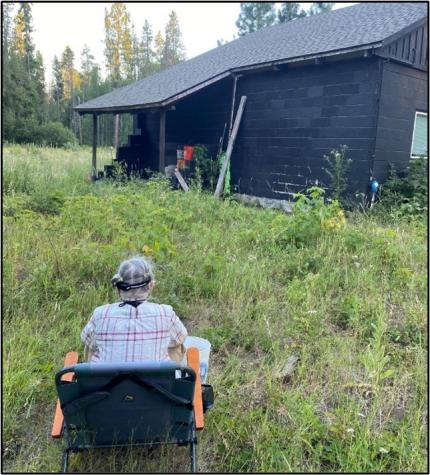
Klickitat Mule Deer Mortality Investigation: Biologist Wickhem investigated two collared mule deer mortalities this week, the first with the help of Wildlife Conflict Specialist Jacobsen. The deer was completely intact (and very bloated) with minimal scavenging by raptors. The cause of death was not immediately clear, and it took a fair bit of investigating. A few superficial bite wounds were visible from the outset, but after shearing half of the carcass, the pair found dozens of bite wounds and scrapes all over the neck, tail, lower half of her torso, rear end and insides of the legs. While none of the bites broke the skin, collectively they appeared to have caused significant internal bleeding. Unfortunately, it was likely a slow and stressful death. Information on the situation was passed on to Washington Department of Fish and Wildlife (WDFW) enforcement. The second deer died just on the northeastern edge of the Newell Rodd fire in Eastern Klickitat County but appeared to have been killed by a cougar.
These deer are part of a four-year study being conducted throughout Game Management Units (GMU) 388 and 382 to track the annual movements of female mule deer and locate important migration corridors. Staff members are also attempting to determine cause of death when an animal dies, which has proven to be difficult. In winter 2021, 81 collars were deployed throughout GMUs for this effort. Twenty-two collars were deployed in the winter of 2022 and 23 in winter 2023. Most of the deployments for 2022 through 2023 were redeployments replacing study deer that died over the first two years of the study. We are nearing the end of the study so these collars will not be redeployed for this project.
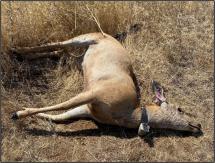

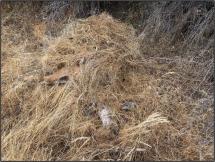
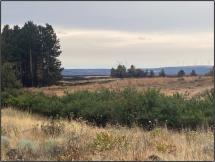
Bumble Bee Atlas Survey: Biologists Combs, Holman, and Stephens surveyed two one-hectare plots in a grid cell for the Pacific Northwest Bumble Bee Atlas. The grid cell was located on Department of Natural Resource (DNR) land in Cowlitz County. Biologists captured the bumble bees using nets and then placed the bees in a cooler to chill them which temporarily immobilizes them. While the bees are still, photos used for identification are taken from several angles. The bees are then released unharmed near the capture location. During the effort, the biologists caught a total of 25 bumble bees which included the yellowhead bumble bee, yellow-faced bumble bee, fuzzy horned bumble bee, and the yellow bumble bee. More information can be found at www.bumblebeewatch.org.

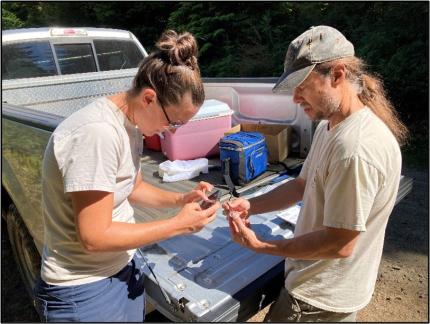
Goat Rocks Mountain Goat Survey: Biologists Stephens and Holman, along with Biologist Borrego from the Nisqually Tribe conducted an aerial survey for mountain goats in the Goat Rocks Wilderness Area. Twenty distinct groups of goats were observed during the four hour effort. A total of 134 goats were recorded and after the sightability model corrected for goats that may have been missed by observers due to being obstructed by vegetation or rocks, the total population estimate came to 141 with a kid to adult ratio of 28:100. This number is very similar to results from last year’s effort and marks the first year since 2015 that biologists have not observed a decline in this population.
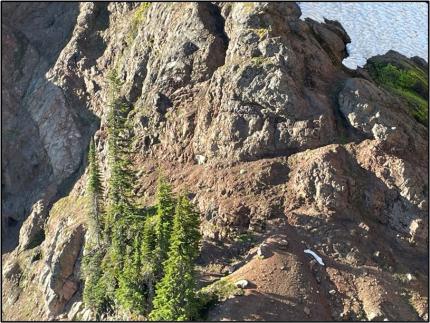
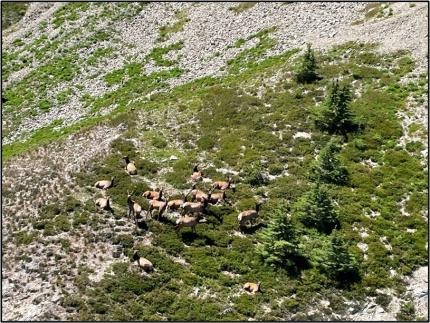
Providing Conflict Prevention and Education
Packwood Elk Immobilization: Biologists received reports of a bull elk with a chair on its head in Packwood. A few days after initial reports, the elk was photographed with a chair and a long piece of rope hanging from his antler. Biologists Stephens and Holman were able to locate the elk, immobilize him, and remove the chair and rope from his antler. It is suspected that members of the public attempted to remove the chair and that is how the rope became tied to his antler. Unbelievably, it was confirmed that this was the same animal who had gotten parts of a hammock entangled in his antlers last fall. Because of this, he was affectionately dubbed “Hammock Head” by the local community and gained some notoriety beyond Packwood and even beyond Washington State. After he shed his antlers this spring and the hammock parts remained, biologists immobilized him in May of this year to remove the hammock.

